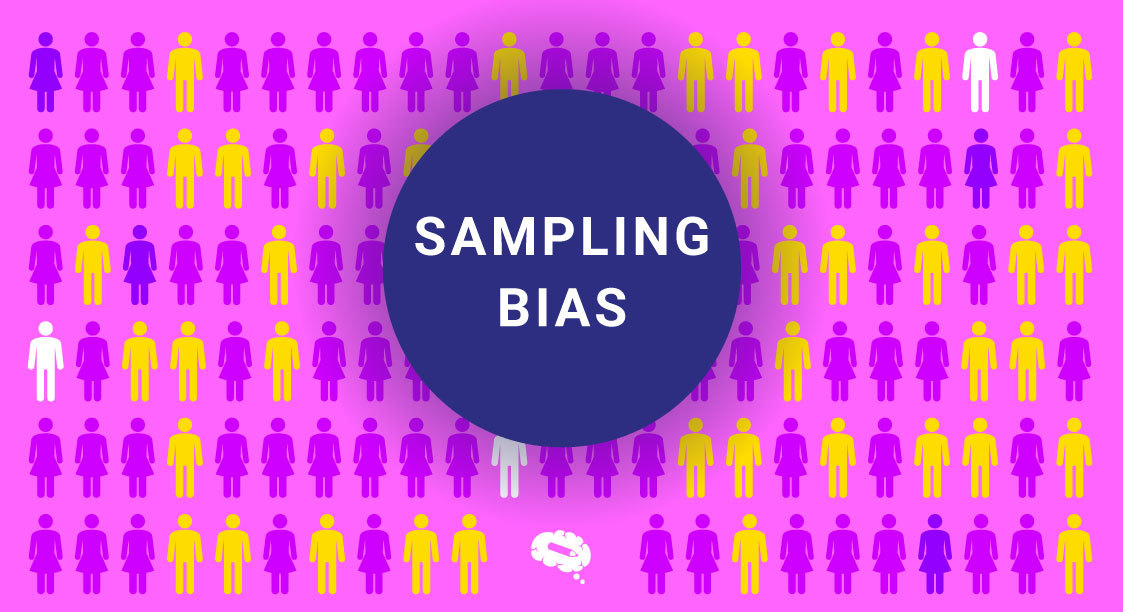Sampling is a fundamental aspect of any research project, and the type of sample chosen can have a significant impact on the validity and reliability of the study’s findings. With so many different types of sampling techniques available, it can be challenging to choose the most appropriate one for your research project. This article aims to provide a comprehensive overview of the various types of sampling techniques and their advantages and disadvantages, as well as factors to consider when selecting a sample type and common pitfalls to avoid.
What is Sampling?
Sampling is the process of selecting a subset of individuals or items from a larger population to represent and study. It is an essential part of most research studies as it enables researchers to draw valid conclusions about the entire population based on a smaller sample. The purpose of sampling is to obtain a representative sample that accurately reflects the characteristics of the population of interest. The sampling method used will depend on the research question, the characteristics of the population, and the available resources.
Types of Sampling
Sampling is the process of selecting a representative group of individuals or units from a larger population. The two main types of sampling are probability and nonprobability sampling.
Probability Sampling
Probability sampling uses a random technique that ensures every member of the population has an equal or known chance of being chosen, providing a fair and representative sample. There are several types of probability sampling, including:
Simple Random Sampling
Simple random sampling is a popular and straightforward method of sampling in statistics. It involves selecting a subset of individuals or elements from a larger population in such a way that every individual or element has an equal chance of being included in the sample.
Systematic Sampling
Systematic sampling is a method of selecting participants from a population at regular intervals. For example, if the population size is 100 and the desired sample size is 20, every fifth member of the population would be selected for the sample.
Stratified Sampling
Stratified sampling is a technique that entails dividing the population into distinct subgroups or strata based on specific characteristics, such as age or gender. Participants are then selected from each stratum in proportion to the size of that stratum in the population.
Cluster Sampling
Cluster sampling involves partitioning the population into clusters or groups and subsequently selecting a random sample of these clusters. All members of the selected clusters are then included in the sample.
Multistage Sampling
Multistage sampling incorporates a blend of diverse sampling techniques to obtain a representative sample. For example, a researcher might use stratified sampling to select clusters and then use simple random sampling to select participants from within those clusters.
Non-probability Sampling
Non Probability sampling is a sampling technique in which the selection of participants is based on factors other than probability. This means that some members of the population may be more likely to be included in the sample than others. There are several types of nonprobability sampling, including:
Convenience Sampling
Convenience sampling is a technique in which participants are selected based on their easy accessibility or availability. For example, a researcher might recruit participants from a class they are teaching or from an online forum.
Quota Sampling
Quota sampling is a method of participant selection that aims to ensure the representation of specific characteristics within the sample, reflecting the diversity of the population. For example, a researcher might aim to recruit a certain number of men and women or a certain number of participants from different age groups.
Judgemental Sampling
Judgemental sampling involves selecting participants based on the researcher’s judgment or expertise. This might be appropriate when researching a highly specialized or hard-to-reach population.
Snowball Sampling
Snowball sampling is a participant selection method that relies on referrals from existing participants. This can be useful when researching a population that is difficult to identify or access directly, such as drug users or undocumented immigrants.
Check our content blog about “Snowball Sampling: Unveiling the Secrets of a Powerful Research Tool“.

Advantages and Disadvantages of Different Types of Samples
Each type of sample has its advantages and disadvantages, which researchers should consider when selecting a sampling method. Here are some general advantages and disadvantages of different types of samples:
Simple Random Sampling
Advantages: It is easy to use and provides a representative sample of the population.
Disadvantages: It can be expensive and time-consuming to create a complete list of the population.
Systematic Sampling
Advantages: It is less time-consuming than simple random sampling and can provide a representative sample of the population.
Disadvantages: If the population has a periodic pattern, it may not provide a representative sample.
Stratified Sampling
Advantages: It can increase the representativeness of the sample by ensuring that important subgroups are included.
Disadvantages: It can be difficult to determine the appropriate strata and their sizes.
Cluster Sampling
Advantages: It is useful for large populations that are geographically dispersed and can reduce costs and time.
Disadvantages: It can reduce the representativeness of the sample if the clusters are not representative of the population.
Multistage Sampling
Advantages: It can be useful for large populations that are geographically dispersed and can reduce costs and time.
Disadvantages: It can reduce the representativeness of the sample if the clusters are not representative of the population.
Convenience Sampling
Advantages: It is easy and quick to implement.
Disadvantages: It can introduce bias and may not be representative of the population.
Quota Sampling
Advantages: It is easy to implement and can ensure the sample includes the important subgroups.
Disadvantages: It can introduce bias and may not be representative of the population.
Judgemental Sampling
Advantages: It is useful for specialized populations and can be more efficient than other methods.
Disadvantages: It can introduce bias and may not be representative of the population.
Snowball Sampling
Advantages: It is useful for hard-to-reach populations and can be more efficient than other methods.
Disadvantages: It can introduce bias and may not be representative of the population.
Check our content blog about “Snowball Sampling: Unveiling the Secrets of a Powerful Research Tool“.
Factors to Consider When Choosing a Sample Type
Choosing a sample type is an important step in research, and it involves considering several factors to ensure that the sample is representative of the population and that the results are valid and reliable.
Research question: This is the starting point for selecting a sample type, as the sample should be chosen to answer the research question and objectives. Researchers need to determine what population they want to study and select a sample that is representative of that population.
Population: The size and characteristics of the population are also important factors to consider. A larger population may require a larger sample size, and the characteristics of the population may affect the selection of the sample type.
Sample size: The sample size should be large enough to ensure that the results are reliable and valid. A larger sample size reduces the margin of error and increases the precision of the results.
Sampling error: Researchers also need to consider the potential for sampling error and choose a sample type that minimizes this error. Sampling error can occur when the sample is not representative of the population, leading to inaccurate results.
Sampling method: The sampling method used should be appropriate for the sample type and the research question. Different sampling methods have different strengths and weaknesses, and researchers need to choose a method that best suits their needs.
Data analysis: These methods should also be considered when selecting a sample type. The sample size and sampling method can affect the choice of data analysis techniques, and researchers need to choose a method that is appropriate for their sample and research question.
Common Pitfalls to Avoid in Sampling
To avoid pitfalls, researchers should carefully consider their sampling methods and strive to use representative and unbiased samples. They should also take steps to minimize sampling error and use appropriate statistical methods to analyze the data. Here are common pitfalls to avoid when conducting sampling in research:
Selection bias: Biased results may arise when either the sampling method or the sample itself is not representative of the population under study.
Sampling error: Taking a sample naturally results in variation, which may cause population parameters to be inaccurately estimated.
Nonresponse bias: This occurs when some members of the sample do not respond to the survey or study, which can introduce bias into the results.
Sampling frame bias: This arises from an incomplete, inaccurate, or outdated sampling frame, leading to bias. Read more about it in our content blog “A problem called Sampling bias“.
Voluntary response bias: Participants self-select into the study, which can lead to biased results because those who choose to participate may differ from those who do not.
Undercoverage bias: The results may become biased when certain groups within the population are not represented in the sampling frame, which is known as undercoverage bias.
Overgeneralization: Making broad generalizations is a common mistake in research where sweeping conclusions are drawn about a population based on a small sample size, resulting in inaccurate results.
Sampling Techniques in Qualitative Research
In qualitative research, some common sampling techniques include:
Purposive sampling: This is the act of selecting participants based on specific criteria that are relevant to the research question or objective. This can involve choosing individuals who possess particular expertise, experience, or unique perspectives.
Snowball sampling: Starts with a small group of participants and then asks them to refer other potential participants who meet the research criteria. This technique can be useful when the population of interest is hard to reach or has a low response rate. Check our content blog about “Snowball Sampling: Unveiling the Secrets of a Powerful Research Tool“.
Maximum variation sampling: When aiming to explore a phenomenon in depth and capture its complexity, it is beneficial to select participants who encompass a wide spectrum of perspectives or experiences relevant to the research question. This approach enables the researcher to encompass a broader range of insights and enhance the comprehensiveness of the study.
Theoretical sampling: This technique requires selecting participants based on the emerging themes or patterns that emerge during data collection. It is commonly used in grounded theory research where the goal is to develop a theory that is rooted in the data.
Convenience sampling: Convenience sampling selects participants who are easily accessible or readily available to participate in the research. Researchers often use this technique in exploratory research or when time and resources are limited. However, it may lead to a biased sample if participants are not representative of the population of interest.
Sampling Techniques in Quantitative Research
Here are some common sampling techniques used in quantitative research:
Simple random sampling: This is a basic sampling technique where each member of the population has an equal chance of being selected for the sample.
Stratified random sampling: To ensure representativeness, the stratified random sampling technique involves dividing the population into strata or groups based on certain criteria and selecting samples from each stratum.
Cluster sampling: This is a technique that involves selecting a random sample of clusters or groups, such as schools or neighborhoods, and then selecting individuals within each selected cluster to form the sample. Check our content blog about “Unlocking the Power of Cluster Analysis“.
Systematic sampling: Systematic sampling is a technique of selecting individuals from the population by choosing every nth member, for instance, every 10th person on a list.
Multi-stage sampling: This selects samples in a series of stages. For example, researchers could start by choosing a random sample of states, followed by a random sample of cities from those states, and ultimately a random sample of individuals within those cities..
Convenience sampling: It is a technique that refers to the practice of selecting study participants who are readily available or convenient for the researcher, such as selecting students from a classroom.
Quota sampling: Quota sampling refers to the method of selecting samples based on pre-established quotas or predetermined numbers for specific criteria, such as age or gender.
200+ pre-made beautiful templates for professional infographics
Mind the Graph platform is a valuable resource for scientists who seek to improve their research impact and effectively communicate their findings. One of the key features of the platform is access to over 200 pre-made, beautiful templates for professional infographics. This feature allows researchers to easily and efficiently create stunning visual representations of their data, which can help to capture the attention of their target audience and improve the overall impact of their research.

Subscribe to our newsletter
Exclusive high quality content about effective visual
communication in science.





